1.The lengths of the perpendicular from the points
(m2, 2m), (mm', m + m') and (m'2, 2m') to the line
x + y + 1 = 0 form
a) an A.P.
b) a G.P.
c) a H.P.
d) none of these
Explanation:
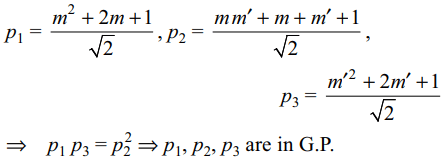
2. The sine of the angle between the pair of lines represented
by the equation \[x^2-7xy+12y^2=0\] is
a) 1/12
b) 1/13
c) \[1/\sqrt{170}\]
d) none of these
Explanation:

3. The square of the differences of the slopes of the
lines represented by the equation \[x^2(sec^2\theta – sin^2 \theta)
-2xy\tan\theta+y^2\sin^2\theta=0\]
is
a) 1
b) 2
c) 4
d) 8
Explanation:
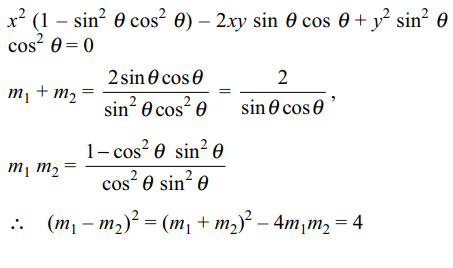
4.The lines joining the origin to the points of
intersection of \[x^2+y^2+2gx+c=0\] and \[x^2+y^2+2fy-c=0\] are at right angles, if
a) \[g^2+f^2=c\]
b) \[g^2-f^2=c\]
c) \[g^2-f^2=2c\]
d) \[g^2+f^2=c^2\]
Explanation:
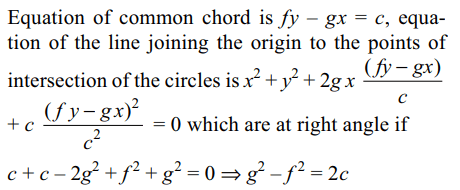
5. Two of the lines represented by \[x^3-6x^2y+3xy^2+dy^3=0\] are perpendicular for
a) all real values of d
b) two real values of d
c) three real values of d
d) no real value of d
Explanation:

6. If pairs of lines \[3x^2-2pxy-3y^2=0\] and \[5x^2-2qxy-5y^2=0\] are such that each pair bisects the angle
between the other pair, then pq is equal to
a) -1
b) -3
c) -5
d) -15
Explanation:

7. The line x + y = 1 meets the lines represented by the
equation \[y^3-xy^2-14x^2y+24x^3=0\] at the points A,
B, C. If O is the origin, then \[OA^{2}+OB^{2}+OC^{2}\]
is
equal to
a) 22/9
b) 85/72
c) 181/72
d) 221/72
Explanation:
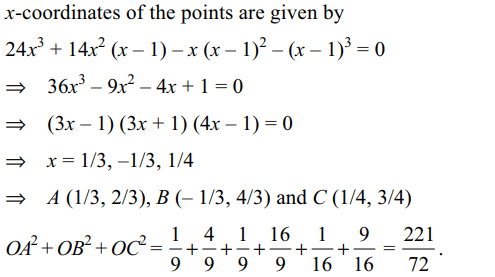
8. If the area of the triangle formed by the pair of lines
\[8x^{2}-6xy+y^{2}=0\] and the line 2x + 3y = a is 7, then
a is equal to
a) 14
b) \[14\sqrt{2}\]
c) 28
d) none of these
Explanation:
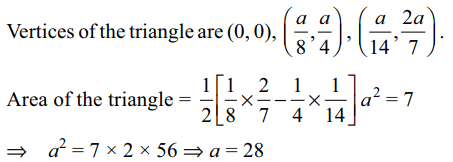
9. The lines ax + (b + c)y = p, bx + (c + a)y = p and cx
+ (a + b)y = p intersect at the point (3/4, 3/4) if
a) p = 3, b + c = 4
b) p = 3, a + b + c = 4
c) p = 6, a = b + c = 4
d) Both b and c
Explanation:

10. A line passes through the point (3, 4) and the point
of intersection of the lines
\[\frac{x}{3}+\frac{y}{4}=1\] and
\[\frac{x}{4}+\frac{y}{3}=1\] and makes intercepts of lengths a and b on the
coordinate axes then
a) a + b = 25/12
b) |a - b| = 7/12
c) ab = 1
d) All of the Above
Explanation:
